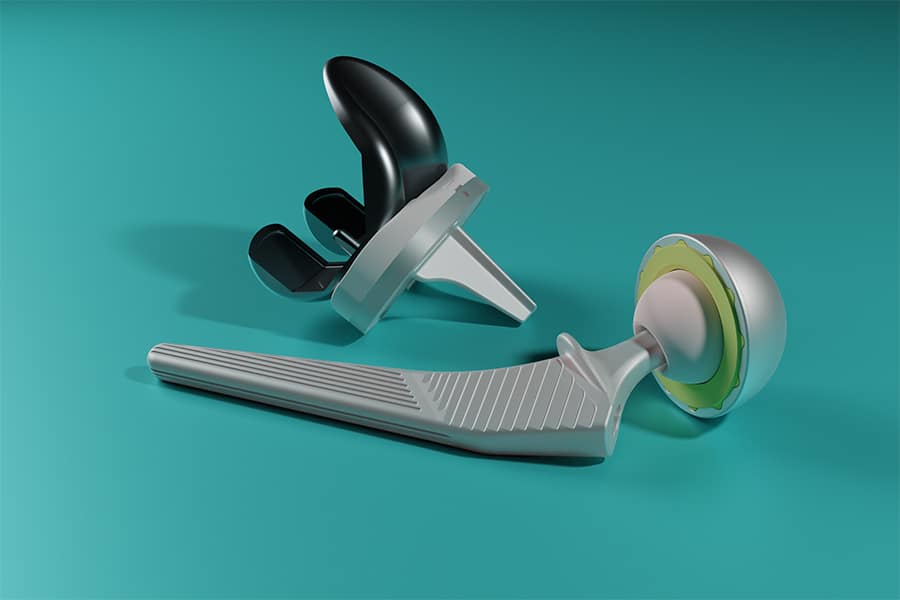As the number of joint replacement surgeries continue to rise around the world, so does the need for advanced technologies in order to keep up with the growing demographics. 3D technology is one of the greatest enhancements in orthopedics for providing patients with outstanding postoperative outcomes. On average, there has been a 30% increase in hip replacement surgeries between the years of 2007 and 2017 and an increase of 40% for knee replacements across OECD countries. By the year 2030, in the United States alone, it is projected that the average demand for hip and knee replacement surgeries will rise by 174% and 673% respectively. That’s an additional 572,000 hip replacement and 3.48 million knee replacement procedures to be performed. Not only do we see a rising trend of procedures performed year after year, but there is also a rising trend of hip and knee replacements performed on younger patients. In the United Kingdom, National Health Service data shows an increase of 76% for hip replacement surgeries performed in patients under the age of 59. As the growing number of younger and more active patients are opting for joint replacement surgeries, the demand for better, longer lasting, and more natural feeling implants is growing just the same. Younger patients tend to have higher expectations of their prospective joint replacement as well, wanting to be rid of the chronic arthritic pain but retain a healthy, active lifestyle.
3D technology is certainly the future of joint replacement procedures, however, the majority of joint replacements performed are still using methods that have been around for decades. A standard x-ray is still the most common form of imaging used for a joint replacement procedure. This is almost entirely due to ease and affordability. CT and MRI scans offer much greater detail and allow for the virtual reproduction of patient anatomy in 3D, however, these scans take longer and cost more, perhaps leading to a slower adoption. The power of 3D is undeniable and studies support the increase in accuracy for determining implant size and positioning when preparing for a knee or hip replacement. However, this is just one example of how 3D technology is being used in orthopedics when the future of 3D aims to go even further.
There is a great deal of research being done in the 3D printing space as well. By analyzing patient anatomy in 3D, surgeons are able to 3D print precise, custom tools to use intraoperatively. 3D printing custom knee and hip prosthesis specific for each patient is another goal that could soon be a reality for anyone wanting a joint implant created just for them. Currently, all implants have to gain FDA approval before making it into the operating room, however, implants are getting more diverse with far more options today than in years past, and it only makes sense that one day your doctor will custom order a unique implant for every one of their patients. There is also research being done into 3D printing artificial cartilage. Human cartilage has proven to be one of the most difficult materials to reproduce artificially, but this could soon become an alternative to the joint replacement surgeries of today.
Virtual and augmented reality devices are now widely available and easy to use methods of viewing 3D models. This is incredibly useful to surgeons who want the most accurate representation of the area they will be operating on. The immersion of virtual reality is perfectly suited to surgical training and there are many platforms that accomplish this quite well. More recently, we’ve seen virtual reality being used for the planning of complex surgeries. In orthopedics, it helps alleviate potential complications by revealing these problems prior to the operation leading to more efficient and safer joint replacement procedures. While it has only been used in a handful of test cases, VR and AR could very well become a standard piece of equipment in the operating room. Augmented reality can feed a surgeon additional information without them needing to look away from the operation site, or display computerized representations of range of motion during a joint replacement.
Today’s 3D technology is immensely powerful as it is. It allows for surgeons to know more about their patient’s anatomy. It allows them to be more prepared when they go into the operating room. It allows them to develop more detailed plans for how to provide the best outcomes for their patients. The ultimate goal for practitioners and patients alike is to maximize postoperative satisfaction. 3D technology is perhaps the best tool we have at our disposal in order to achieve this goal.
To learn more about how Kinomatic is harnessing the power of 3D, check out our other blog posts here.
References:
Kurtz, Steven PhD1; Ong, Kevin PhD1; Lau, Edmund MS2; Mowat, Fionna PhD2; Halpern, Michael MPH, MD, PhD3 Projections of Primary and Revision Hip and Knee Arthroplasty in the United States from 2005 to 2030, The Journal of Bone & Joint Surgery: April 2007 – Volume 89 – Issue 4 – p 780-785 doi: 10.2106/JBJS.F.00222
https://www.oecd-ilibrary.org//sites/2fc83b9a-en/index.html?itemId=/content/component/2fc83b9a-en#
